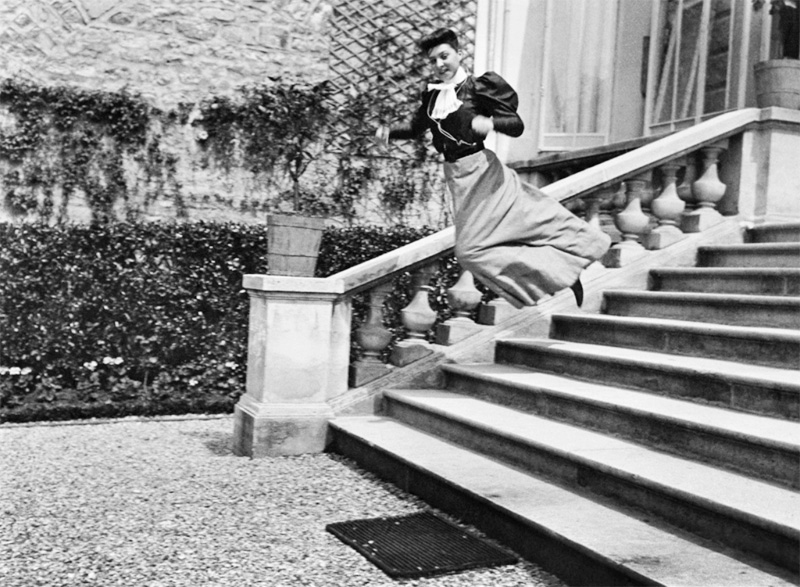
Jacques Henri Lartigue, “Bichonnade”, 40, rue Cortambert, Paris, 1905. Tirage gélatino-argentique. (MINISTERE DE LA CULTURE-FRANCE/AAJHL)
Our eldest granddaughter recently received a reading list for her future studies. One section related to “Art and Photography”. It contained the following items:
- Steve McCurry, The Iconic Photographs
- Don McCullin, The Impossible Peace: From War Photographs to Landscapes
- Tim Walker, Pictures
- Wells, L, Photography: A Critical Introduction
- Badger, G, The Genius of Photography
- Clarke, G, The Photograph: A Visual and Cultural History
- Jeffery, I, Photography: A Concise History
I pondered the choice of photographers for a while. Three living photographers: a photojournalist (McMullin); a not universally liked and recently criticized photojournalist cum travel photographer (McCurry); and a fashion photographer (Walker). Why, I wondered this particular choice? Unfortunately, the list did not provide enough information for me to reach any conclusion.
Then I noticed The Genius of Photography by Gerry Badger. It turns out that it’s a companion book to a BBC TV series. I further discovered that the entire series is available online here (I believe it’s also available on YouTube).
According to Docuwiki:
In the most comprehensive look at the most influential art form in the world, the series explores every aspect of photography – from daguerreotype to digital, portraits to photo-journalism, art to advertising; in the UK, America, China, Japan, Africa and beyond. It includes interviews and encounters with some of the world’s greatest living photographers including William Eggleston, Nan Goldin, William Klein, Martin Parr, Sally Mann, Robert Adams, Juergen Teller, Andreas Gursky, Jeff Wall and many others. But as well as telling the stories behind the world’s greatest photographs and the photographers who took them, the series examines the ‘genius’ of photography itself, this magical, unpredictable and democratic medium that has transformed the way we see ourselves and our world.
The series culminates in an examination of the impact of the digital post-production techniques that make anything possible, and looks at the rediscovery of techniques which are taking photography back to the 19th century.
With contributions from Jeff Wall, Andreas Gursky, Gregory Crewdson and one of China’s leading photographer Wang Qingsong.
The series consists of six episodes, each about one hour long (the docuwiki page mentioned above provides longer descriptions of each episode):
- 1800-1914: Fixing the Shadows. A look at how the problem of ‘fixing the shadows’ was solved by two rival methods.
- 1918-1945: Documents for Artists. How, in the decades following the First World War, photography was the central medium.
- Right Place, Right Time. How photographers dealt with the dramatic events like D-Day, The Holocaust and Hiroshima.
- Paper Movies. A look at the golden age of photographic journeys from the 1950s to the 1970s.
- We are Family. How the medium translates personal relationships into photographic ones.
- Snap Judgements. A look at the current state of the art, from phone cameras to digital post production.
I’ve just watched all six episodes and I must say that I enjoyed it. Of course I have a few quibbles:
First. I think there was a definite bias towards documentary photography/photojournalism and against “art” photography. “Art” photography barely appears until the last episode, where it’s seen rather negatively as being driven by the market (a point, which I agree with) i.e. what sells, rather than what has artistic merit. The references to “pictorialism” are particularly negative.
Second. While I recognize that you have to make choices when making a documentary of this type, I feel that the passing mention of Alfred Stieglitz, Ansel Adams, Edward Weston (and I don’t think Paul Strand was even mentioned) doesn’t do justice to their contribution to photography. I was pleased to see that my idol, Eugene Atget was given the attention he deserves. Joel Meyerowitz referred to him as being to photography what Mozart was to music – head and shoulders above everyone else.
Third. If space was needed to incorporate some of these seminal figures, maybe a bit less time could have been devoted to the “intimate” photography (e.g. Larry Clark, Nan Goldin, Araki etc.) in episode 5. I’m probably showing my own bias here. I’m not fond of this type of photography. It does, however, provide a hint as to the the type of photography that the creators of this series seem to think of as the best: a kind of a super amateur snapshot taken by a photographer with a kind of innate creativity and very basic equipment.
There were some great moments though. An interview with a wealthy family who had hired Diane Arbus to do some family pictures. I loved a line from the lady of the house, referring to some of the pictures as “Standard ones. The family under the Monet”. There’s also an interview with the boy (now grown up) in the famous “Child with Toy Hand Grenade in Central Park, N.Y.C. 1962” (also by Arbus). There was also an interesting piece in episode 6 about how the late Phlip Jones Griffiths (obviously a strong Cartier-Bresson disciple) had tried (unsuccessfully) to block Martin Parr‘s Magnum membership. And much more…
